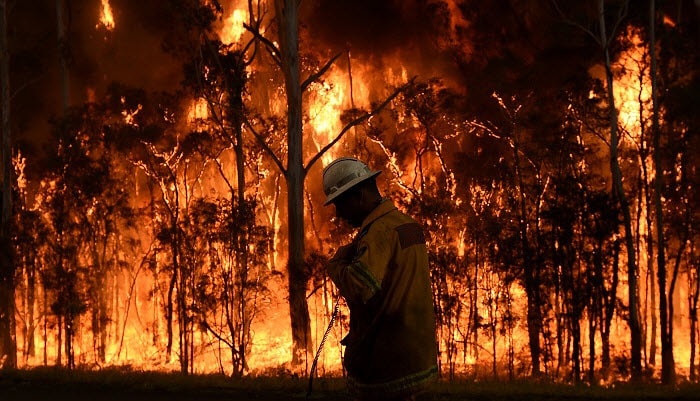Protecting Your Home: The Important Function of a BAL Report in Bushfire Readiness
Protecting Your Home: The Important Function of a BAL Report in Bushfire Readiness
Blog Article
Just How BAL Report Impacts Shrub Fire Protection Steps
In the realm of bush fire security, the Building Assault Degree (BAL) record stands as a crucial tool that substantially influences the security and durability of homes in fire-prone locations - BAL Report. The influence of a BAL assessment prolongs much past simple paperwork; it functions as the cornerstone for figuring out the appropriate building and construction criteria and fire defense actions necessary to minimize the threats posed by bushfires. As areas come to grips with progressively serious fire seasons, recognizing just how the BAL report forms these safety procedures comes to be paramount for home owners, policymakers, and building contractors alike
Understanding the Bushfire Assault Degree

Importance of BAL Report Evaluation
Moreover, the BAL report analysis works as a fundamental step in abiding with lawful obligations and demands connected to bushfire defense. Local councils and authorities commonly mandate the entry of a BAL record as part of the planning and building authorization procedure to ensure that buildings are sufficiently secured versus bushfire dangers. Falling short to perform a complete BAL record assessment can result in insufficient defense steps, leaving buildings prone to ravaging bushfire incidents.
Construction Specifications Based on BAL
A detailed understanding of the Bushfire Strike Degree (BAL) allows property proprietors to apply building criteria tailored to their particular threat account. Building and construction requirements based upon BAL are essential in mitigating the impact of bushfires on residential properties. The BAL score classifies the possible threat a residential or commercial property faces during a bushfire on a range from BAL-Low to BAL-FZ (Fire Area) Each BAL level represents particular building demands laid out in the Australian Common AS3959-2018 Building of Structures in Bushfire-Prone Locations. Residential properties classified as BAL-Low may only require fundamental measures such as removing particles and keeping gardens, while those in higher BAL groups require more durable measures like cinder screens, fireproof materials, and sealed home windows. Sticking to these building standards not only improves the structural durability of the home however also enhances the general security of locals throughout a bushfire occasion. Consequently, residential property owners need to meticulously consider their BAL ranking and follow the corresponding building standards to sufficiently guard their homes and residents.
Executing Fire Defense Procedures
With the structure look at this website of construction criteria based on Bushfire Attack Level (BAL) in place, the emphasis now moves towards the useful application of fire security steps to strengthen residential or commercial properties against bushfire hazards. Easy actions consist of making use of fire-resistant building products, mounting ash guards on vents, sealing gaps in walls and roofs, and keeping a clear area around the residential or commercial property cost-free from flammable plant life. By integrating both passive and active strategies, properties can considerably decrease their susceptability to bushfire cases and increase the security of residents.
Safeguarding Houses Versus Bushfires
Successfully securing homes against the damaging impacts of bushfires calls for a aggressive and comprehensive method to fire protection procedures. House owners staying in bushfire-prone areas must focus on the application of various techniques to boost their property's strength versus wildfires. One fundamental element is developing a defensible room around the home by keeping a clear area free of combustible materials. This includes on a regular basis cutting vegetation, eliminating dead plants, and ensuring a secure distance between frameworks and trees. Installing fireproof roof covering products can also dramatically reduce the threat of ember attacks and direct flame contact. In addition, sealing vents and spaces to avoid cinder intrusion, along with incorporating fireproof doors and home windows, can assist fortify the home's defense versus bushfires. Buying a trustworthy water resource, such as a well-kept lawn sprinkler or a committed water tank, is vital for supplying water during fire emergency situations - BAL Report. By accepting an aggressive position and integrating these safety procedures, property owners can significantly increase their opportunities of securing their homes against bushfires.
Final Thought
In verdict, the Bushfire Attack Level (BAL) report plays an essential role in establishing the required protection actions against bushfires. By assessing the BAL, construction standards can be customized to reduce the risks and make sure the safety and security of homes in fire-prone areas. Carrying out fire defense steps based upon the BAL record is important in safeguarding properties from prospective bushfire hazards. It is crucial for house owners to article source prioritize BAL analyses and comply with suggested construction requirements to boost bushfire durability.
In analyzing bushfire threat to homes, recognizing the Bushfire Attack Level (BAL) is an important part for executing efficient defense measures. In general, a clear understanding of the Bushfire Strike Level is necessary for carrying out ample security see here now actions and alleviating the impact of bushfires on properties.

Report this page